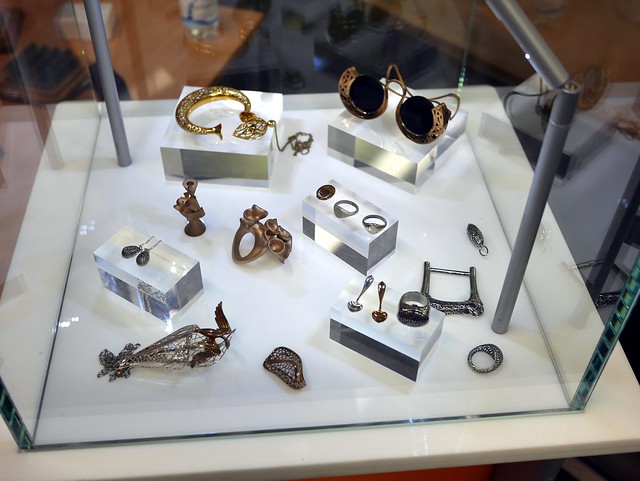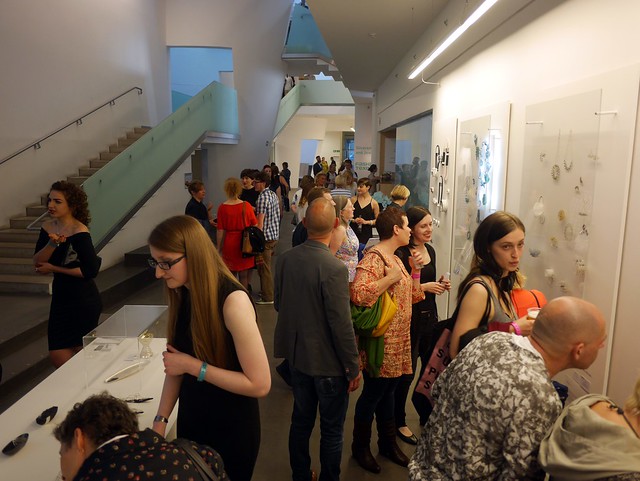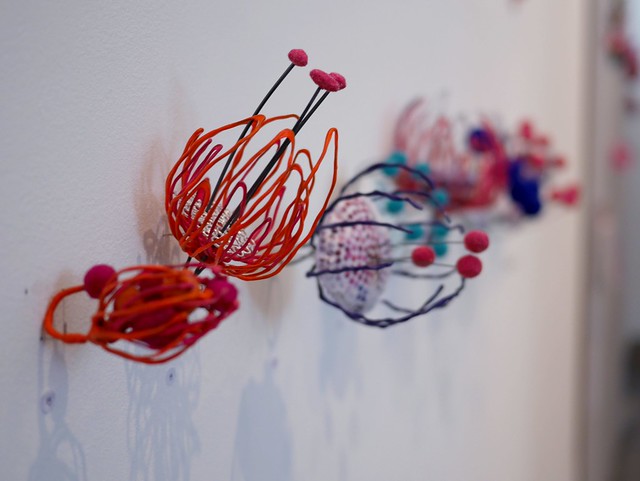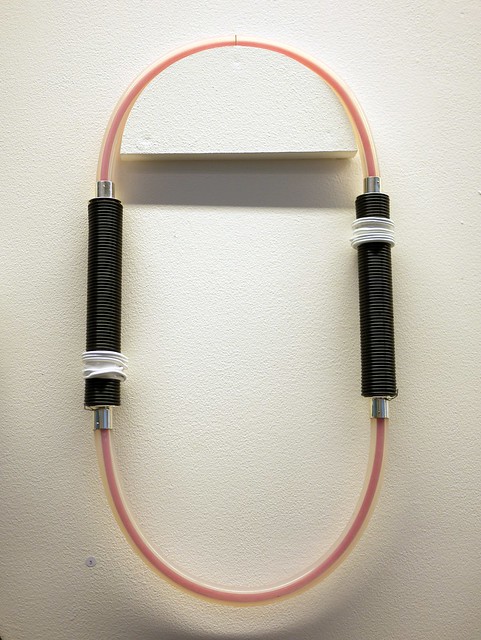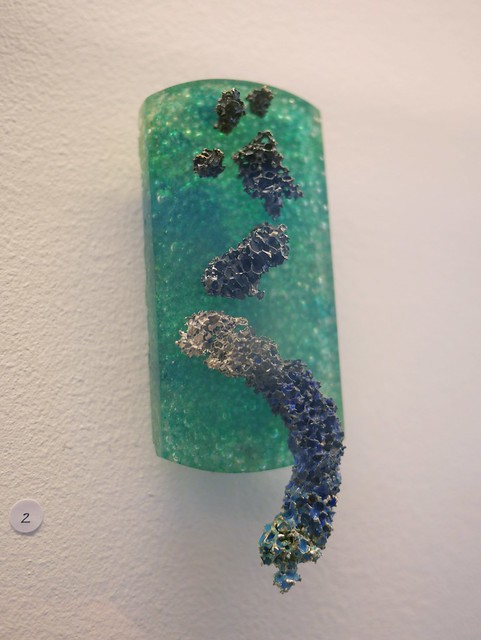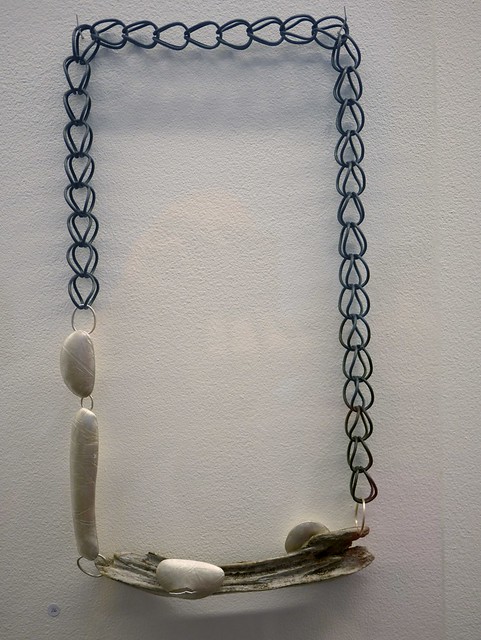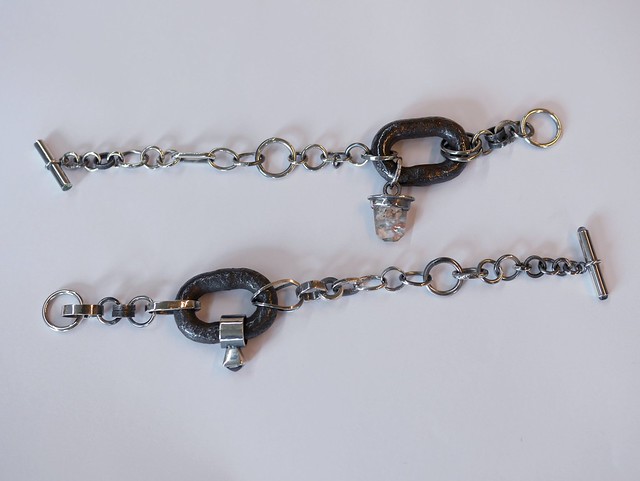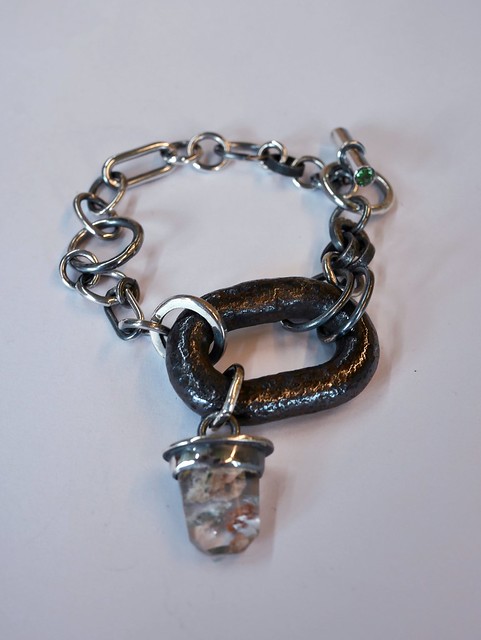This was set up by Gemvision UK and Glasgow Kelvin College, in conjunction with Rofin Laser Welders, ES Technology, Sutton Tools, EnvisionTEC and Indutherm casting. It was great to get to talk to some of the people involved in the direct metal laser sintering at ES Technology and to get to see some of the incredible work they have been able to produce using this technology:
After that, it was off to the Glasgow School of Art for the 2015 degree show. As usual, I spent most time in the jewellery and silversmithing section and the show was good, as ever.
I started off by talking to Rachel Blair about her work in paper and precious metals, work chosen to feature on the poster for the general degree show, not just for jewellery:
I really like this work, the use of the impermanent and decomposing paper with the utterly simple metalwork. It is always interesting to me how themes seem to seep their way through some shows and one of the themes of this show was definitely "surface" and there were a lot of exquisitely-considered surfaces on a lot of the work.
Amy Dunnachie makes work from distressed, painted and transfer-printed found wood. Some of these pieces are made from the bungs from whisky casks, so smelled amazing too!
Having said all that, my favourite piece by her didn't relate to her main theme at all and was this elegant pendant using a found lens:
I'm proud to be able to say that Karen Westland learned her advanced CAD skills at Glasgow Kelvin College, where she furthered what she had already learned at the GSA with one of our advanced night-classes in Rhino and I think that she's applied her skills admirably:
Not all of her work is CAD/CAM, however and I was really taken with these pieces which were developed in CAD but then completely hand-made - an interesting approach:
Another unlikely connection with the show this year came in the surprise meeting with Kathleen Reilly who had produced a range of brilliantly subversive silverwares, which I loved:
Kathleen did a 6-week school's evening class with me some years ago, age 15 or 16 and made a silver ring with a black onyx in it. I can't really claim to have helped with her show in any way, but it is pleasing to know that she was inspired enough to keep it going and to end up with such an impressive array of work.
Maliha Khan makes work in blackened balsa-wood, based on crystallography and the idea of gemstones, without actually using any gemstones. I particularly liked these brooches - lenses again!
I will confess to not knowing quite what to make of the work of Checkie Ieong:
Unfortunately, she was not at her stand to discuss.
It will probably surprise some of you to learn that I absolutely love the work of Maisie Ford - especially my students whom I am always berating for working with 'flower' themes! - but these are something else:
There is something here that reminds me of "The Clangers", something mid-1970s without any of the baggage, something 'pop' without being in any way cheesy and her collection in fabric and metals completely hangs together.
Not so sure about Angel Reid's, "Like the Chapman brothers but camp..." work:
Miriam Woolf makes jewelley which can only be described as "Dystopian" and needless to say, it appeals to me a lot. Her use of carefully-melted plastic, found and recycled materials and precious metals manages to deftly avoid cliché and is subtle, wearable and yet retains a certain punk ethos:
Surface again features largely in the work of Sophie Warringham's mixed-material pieces, which include plastics, salt crystals, silver, enamels and resin.
When it comes to my own students, I am not allowed to have favourites but when I'm reviewing other shows, I can be as partisan as I like! Thus by far my favourite work was that of Ieva Mikutaite and her kinetic pieces based on the seeds of a dandelion.
All of this work is finely made, largely in the digital realm and then hand-finished and constructed. All the pieces move on a series of riveted pivots or have interchangeable elements. They are to-be-played-with but are far from playful; instead, they intrigue and they are beautifully-made.
(I also admire anyone who knows the difference between SLA and SLS technologies!)
Surfaces again in the work of Tina MacLeod and her wonderful patinated mokume pieces which reflect the landscape and vegetation of Scotland. These are subtle pieces which have an immediate appeal but which also leave a lasting impression.
From a technical point of view, they are especially interesting.
If you are interested in learning more about any of the graduates, you can see their galleries on the GSA mini-site, here. (Scroll down on the site.)
On Sunday night, I went to hear Hans Joachim Irmler (of Faust) and Jaki Liebezeit (of Can) perform as a duo of drums and keyboards. I've always loved that motoric 1970s sound of Germany and it was brilliant to be able to hear two luminaries of the era working together at what they do best.
All through the gig, I kept thinking it was my ex-student, Inness Thomson on keyboards:
The performance was stellar, unashamedly harking back to the heyday of Can and Faust but still fresh and new without any nostalgia or re-hashing of previous glories.
I never understand how support-acts are selected. In this case, the support act were the utterly insipid "Wolf" who did nothing but remind me of other acts who do it better, Portishead, Laika, Stereolab... "I have nothing to sell you" simpered the lead 'singer' from behind her rack of expensive technology. I was glad of that.
My own bench this week has been further occupied with making stock to keep me going over the summer, including some new "Dungeness Works" made from the ship's chain I found on the beach at Dungeness last summer:
More soon.



